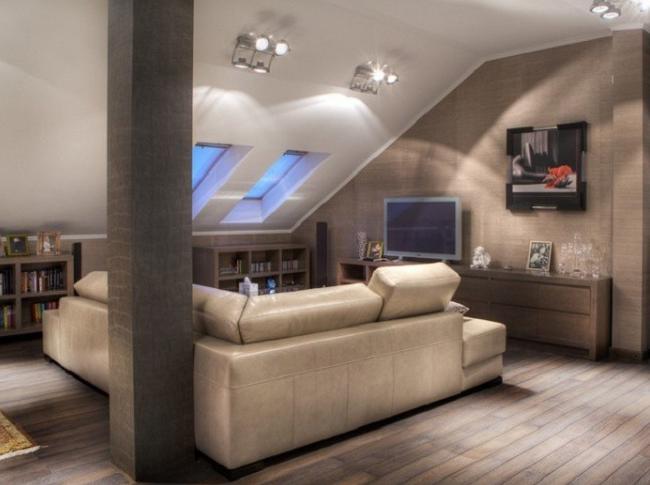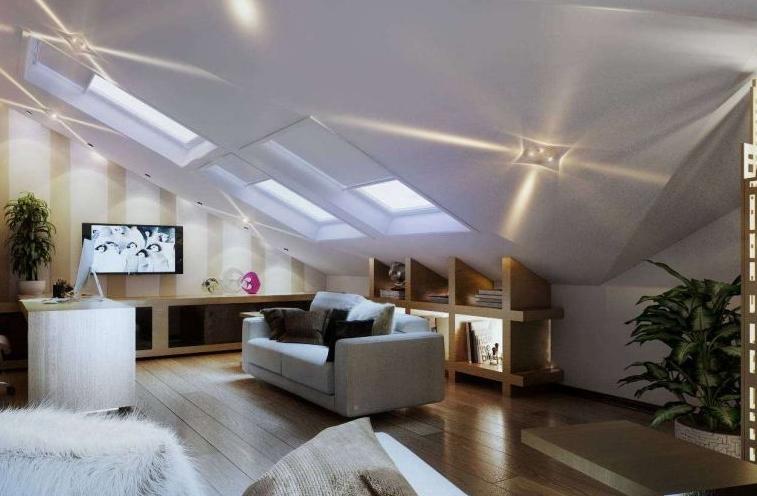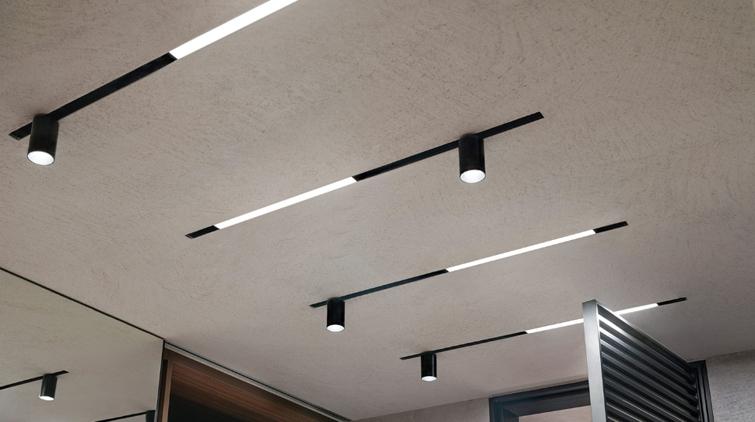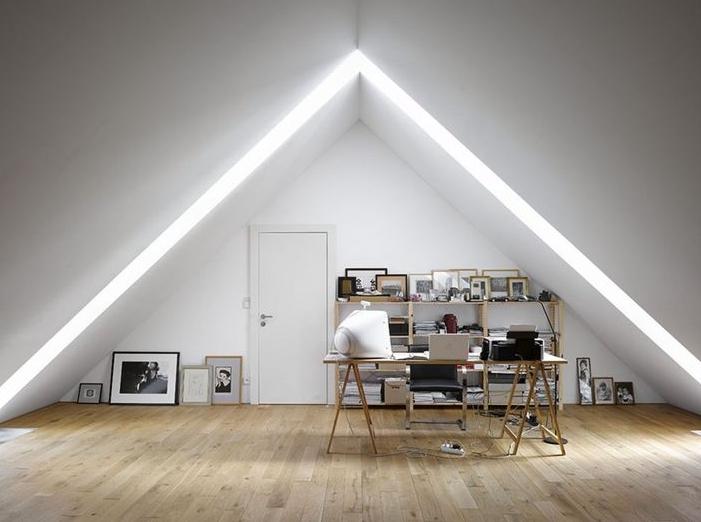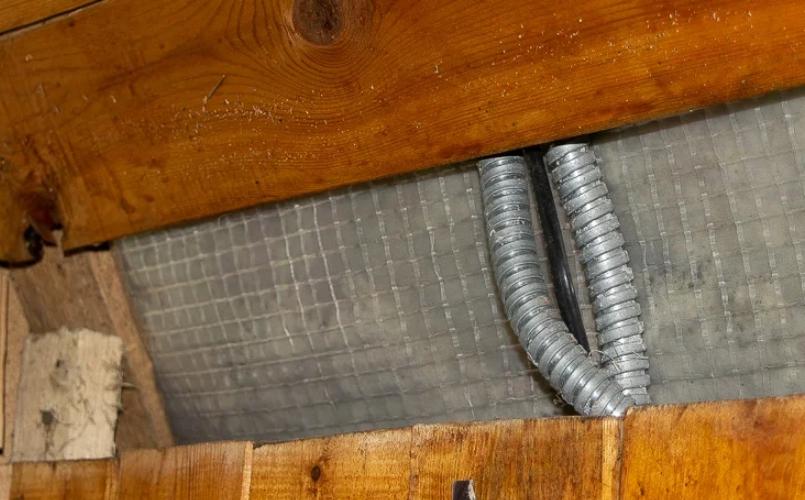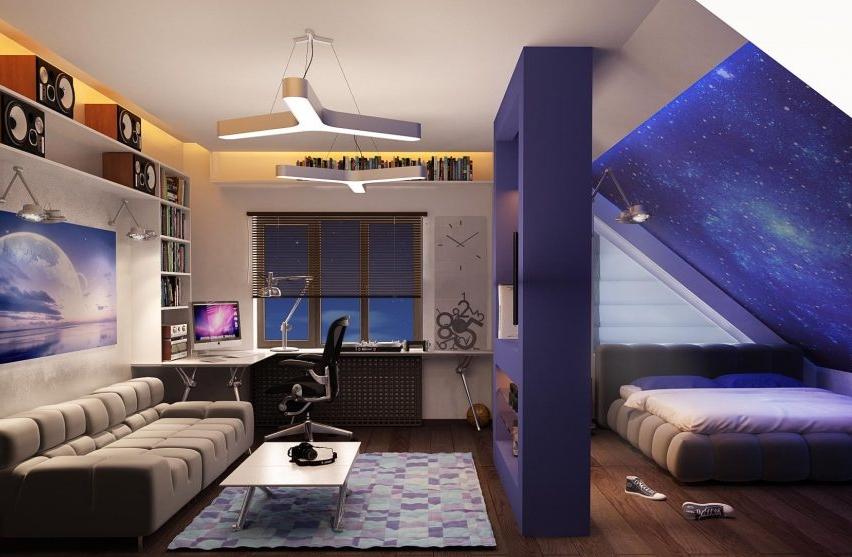Features of attic floor lighting
Light in the attic differs from standard solutions due to the peculiarities of design and the presence of sloped ceilings, on which it is much more difficult to properly position the lights. And if you initially make mistakes, it will be difficult to eliminate them, since you will have to rewire, and in some cases and remake the repair.
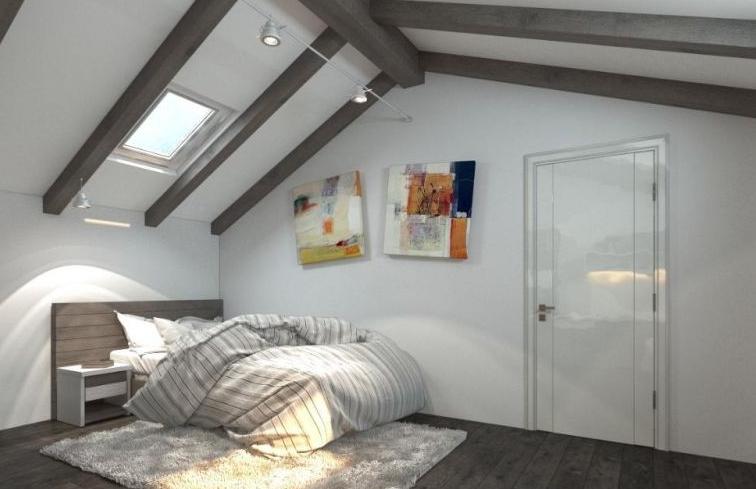
Organization of lighting of the attic floor
It should be noted immediately that if the rooms in the attic are made standard and there are no beveled ceilings, then you can put fixtures on the general requirements. But if the rooms have sloped surfaces, it is worth considering a few recommendations:
- Massive chandeliers and other similar options are ineffective, as they do not provide normal lighting. They are not suitable for a corner ceiling and clutter the space, which is unacceptable.
- It is better to use a large number of lights and place them around the perimeter. It is important to be able to adjust the direction of light and its brightness to provide comfortable lighting.Adjustable lights are a great option for the attic.
- Decorative lighting is appropriate, which will visually expand the space and accentuate the desired areas. Also suitable are options with highlighting the contours of the room or window openings.
- To create the effect of increasing the room is to use reflected light, when the flow is directed to the wall or a sloping ceiling.
- When choosing, the stylistics of the room design is taken into account, so you need to think about this point in advance.
By the way! For the attic floor is perfectly suitable combined light, when different types of equipment are combined.
Choice of lighting fixtures for the attic
Before you begin work, you need to pick up lights For mansard ceilings, there are many options, but the best solutions are these:
- Local lighting in the form of adjustable wall lights, sconces or mobile lamps, which can be placed on the floor or on the table. This option is needed to provide comfortable work or rest and highlight a separate zone in the room.The version with directional beams looks good on a sloping surface.
- Spotlights. Here, only adjustable models are suitable to adjust them to the room. They can be both recessed and surface-mounted, if there is no possibility to cut them into the ceiling.
- Track systems are a great solution, as a rail is attached to the surface, on which you can place the guided plafond anywhere and adjust it almost any way you want.The track luminaire is adjustable for any room.
- Fixtures with diffusers. It can be both frosted elements, giving even light, and crystal plafonds, which cast reflections on the surface and provide a decorative effect.
- LED strip can be used both as a decorative design element and as a general light if you fix an aluminum profile with a diffuser and glue several rows of high-brightness tape inside it.
- Light lines - Another solution that can be implemented both on stretch ceilings and suspended plasterboard ceilings. Suitable for modern interiors.Light lines are a great solution for a beveled ceiling.
Chandelier on the mansard ceiling can be used only if there is a horizontal section, and beveled surfaces are not very large.
Conducting electrical wiring in the attic area
The safety of the system and its convenience depends on the proper wiring. Wires are required for both lighting and outlets, so the system turns out to be quite complex. Here it is necessary to remember a few recommendations:
- Since the attic is located under the roof, the supporting structures are almost always wooden, which imposes special requirements for installation - the material supports combustion.
- Preliminary is always a draft, which specifies in detail all the lights and sockets, as well as places of cabling. It is important to think about the location of furniture to install the equipment where it is necessary.
- Lay cables only in special non-combustible corrugations to ensure safety. Their size is selected by the number of cables. If possible, avoid installing junction boxes in the attic or make them as small as possible.
- Fasten the corrugations to the beams with special fasteners. It is important to fix them firmly so that the wiring does not dangle.Often corrugations with wiring are laid under the batten.
- It is best to lay three-core copper cableIts cross-section is chosen according to the planned load with a small margin.
- Always leave long enough ends to connect outlets, switches, lights and other equipment. Wires should not be stretched.
It is best to involve a professional designer in the design. Then all the important nuances will be provided for the compliance of the system with the established requirements.
Options for the location of lighting fixtures in the attic room
Lighting the attic with sloping walls requires a special approach, but to understand the location of light sources is not difficult:
- If there is a horizontal plane in the middle or the slopes converge in the center, you can use classic systems. The best solution is to use chandeliers with lamps hanging at a certain height, which is selected according to the situation.
- For sloped surfaces use either fixtures with flexible legs, or variants with adjustable brackets to set the position of the lamps as needed.
- Track systems can be mounted on horizontal as well as on inclined or vertical surfaces. It is important to follow the conditions of installation, which are prescribed in the instructions, The lamps are put on after the work is finished.
- Spot lights are used for inclined and flat planes. Best suited for stretch ceilings and plasterboard constructions. It is important to properly calculate the power of the lamps and the location of the equipment.
- LED strip can be mounted in niches, on projections or simply glue on the contours. You can use an aluminum profile with a diffuser for uniform illumination.
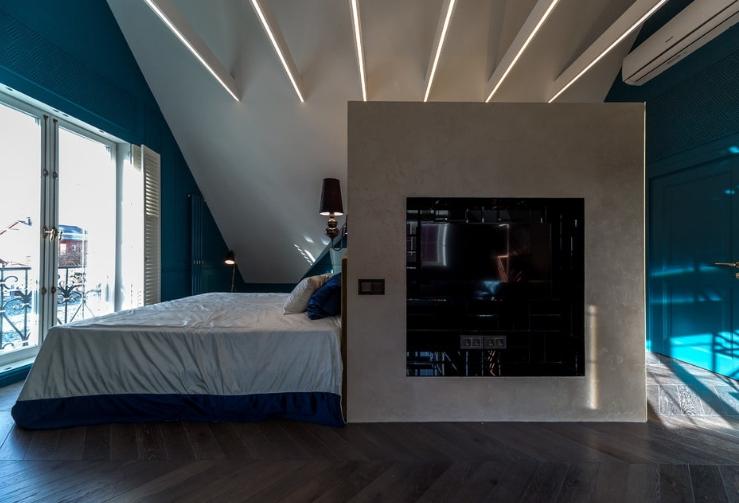
You can combine several types of lighting to achieve the best effect.
How to zone the space
Beveled slopes can complicate the division of the attic into functional zones, so it is worth carefully selecting lighting fixtures, and when planning their location keep in mind these tips:
- For the work area, you should use bright light that provides good color rendering and will not cause discomfort. It is better to give preference to the natural spectrum. It is important that lighting is adjustable, so often use wall or table lamps.
- If there is a children's room on the attic floor, you need to provide high-quality general lighting and highlight the functional segments. Particular attention is paid to the play area and the work table, if the child needs to do homework.Correctly zoning the space and qualitatively lighting it is very important.
- For those who do needlework, it is worth choosing the type and power lighting based on the hobby. It is important to provide comfortable conditions in which the vision will not be strained.
Videos: Lighting solutions for ceilings in the attic.
Bright and modern interior in the Loft style with elements of brutalism in the attic floor of a private house.
Make lighting in the attic floor is not difficult if you understand its features and make a detailed project in advance. It is important to choose the right models of fixtures and safely lay the wiring.
